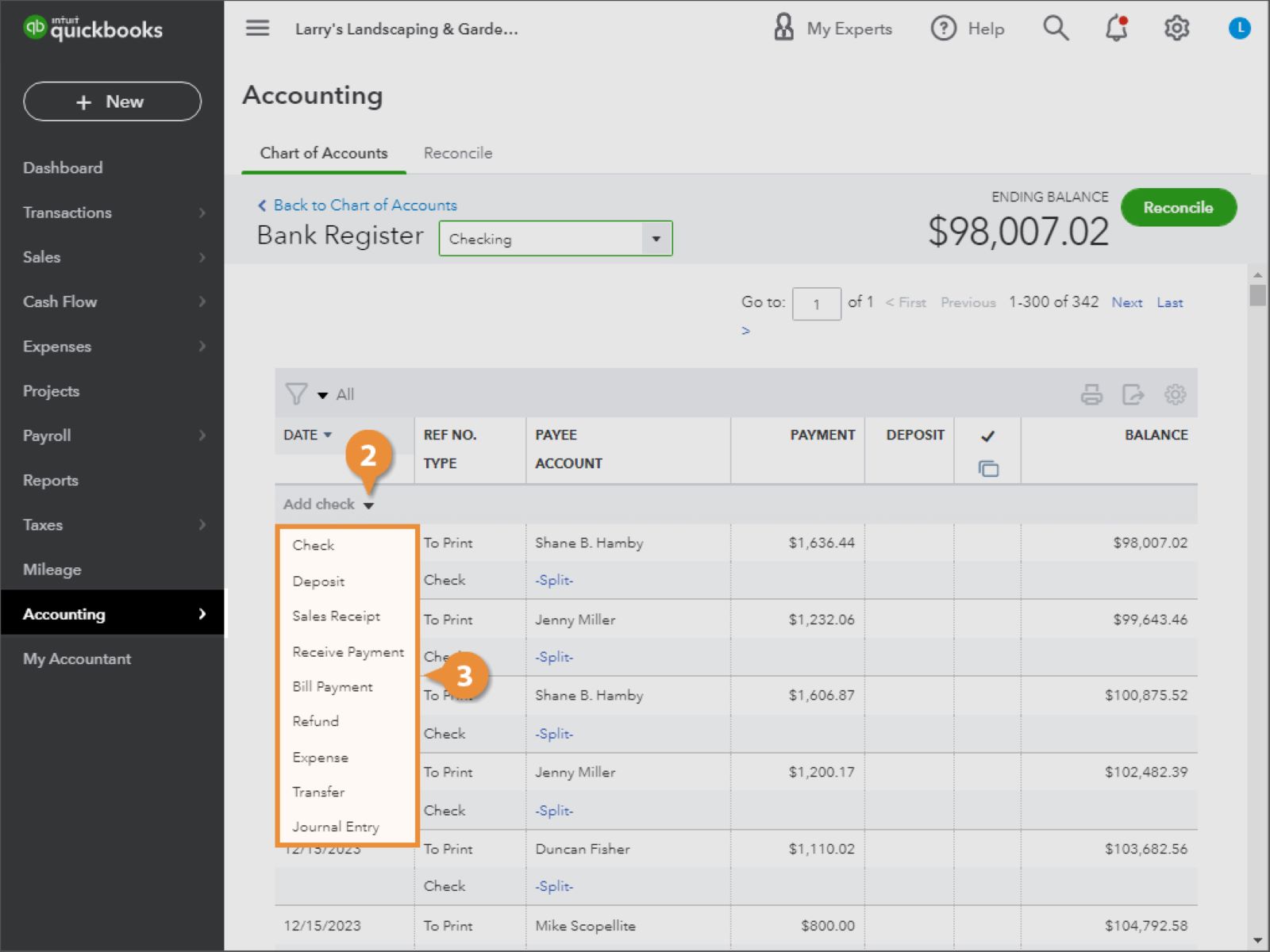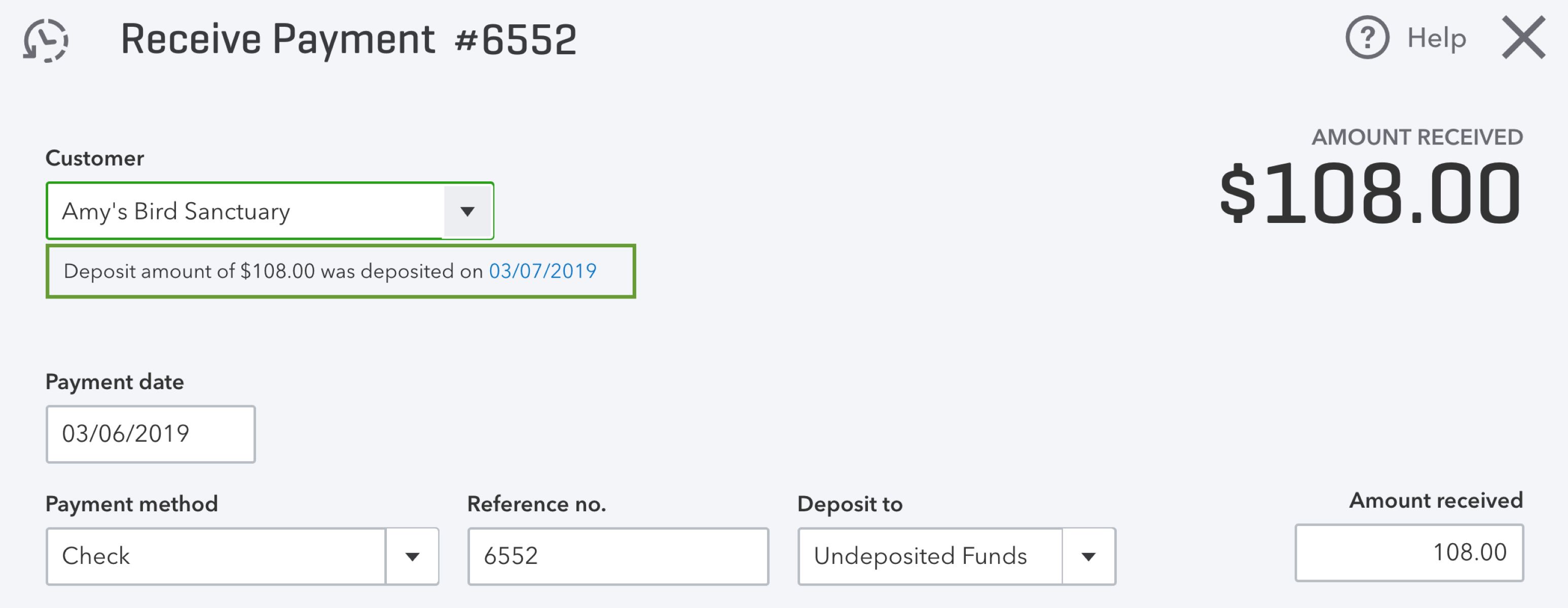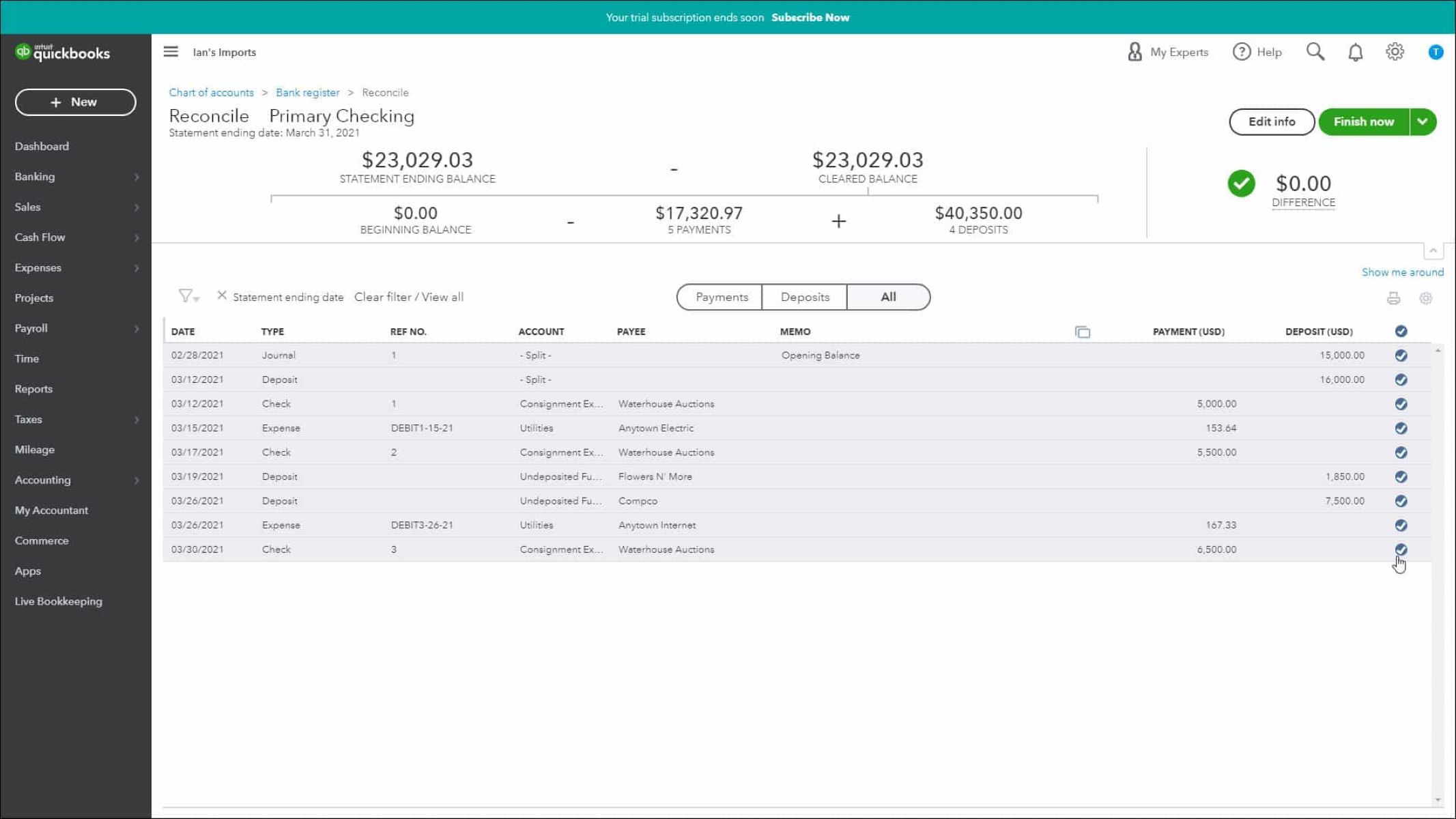Introduction
Welcome to our guide on how to unmatch a transaction in QuickBooks Online! QuickBooks Online is a powerful accounting software that helps businesses efficiently manage their finances. One key feature of QuickBooks Online is the ability to match transactions, which helps keep your accounts accurate and organized.
When you reconcile your accounts in QuickBooks Online, the software automatically matches transactions from your bank or credit card statements with the corresponding transactions you’ve entered into the system. This matching process ensures that your records align with your actual financial activity, making it easier to track and manage your business’s cash flow.
However, there may be instances where you need to unmatch a transaction. This could happen if a transaction was previously matched incorrectly, duplicated, or if you need to make changes to the transaction details. Unmatching a transaction allows you to modify or delete it without affecting the rest of your reconciled records.
In this guide, we will walk you through the step-by-step process of unmatching a transaction in QuickBooks Online. We will also provide a case study example to illustrate how to unmatch a transaction for a payment that has been recorded twice. But before we dive into the specifics, let’s take a closer look at why you might need to unmatch a transaction in the first place.
Understanding matched transactions
Before we delve into the process of unmatching transactions in QuickBooks Online, it’s important to understand how matched transactions work. When you download your bank or credit card statements into QuickBooks Online, the software automatically matches those transactions with the corresponding entries in your books.
When a transaction is matched, it means that QuickBooks Online has identified two entries that are likely referring to the same financial activity. Matching transactions is done based on criteria such as the transaction date, amount, and description. Once a transaction is matched, it appears as a “Match” in your records, indicating that the software has made the connection between the bank statement entry and your recorded transaction.
This matching process is crucial for ensuring the accuracy and integrity of your financial records. By matching transactions, you’re essentially confirming that the activity reflected in your bank statements aligns with the transactions you’ve entered in QuickBooks Online.
When a transaction is matched, it is considered reconciled, which means that it has been reviewed and accounted for in your books. Reconciling transactions is an essential step in the accounting process, helping you maintain the accuracy of your financial information and identify any discrepancies or errors.
However, there are instances when you might need to unmatch a transaction. This could occur if a transaction was mistakenly matched, duplicated, or if you need to make changes to the transaction details. It’s essential to understand how to unmatch transactions effectively to avoid any potential issues or inaccuracies in your financial records.
In the next section, we will explore the various reasons why you may need to unmatch a transaction in QuickBooks Online and guide you through the step-by-step process to unmatch a transaction seamlessly.
Why would you need to unmatch a transaction?
There are several reasons why you would need to unmatch a transaction in QuickBooks Online. Let’s explore some common scenarios:
- Mistakenly matched transactions: Sometimes, QuickBooks Online may incorrectly match a transaction from your bank statement to an unrelated transaction in your books. This can happen if the transaction dates or amounts are similar. Unmatching the transaction allows you to correct the mistake and ensure accurate record-keeping.
- Duplicate transactions: Occasionally, you may accidentally enter a transaction twice in QuickBooks Online, resulting in duplicate entries. Unmatching one of the duplicate transactions allows you to identify and delete or correct the duplicate entry.
- Modified transaction details: There may be instances where you need to make changes to a previously matched transaction. This could involve updating the description, account allocation, or other details. Unmatching the transaction allows you to make the necessary modifications without affecting the reconciled records.
- Error corrections: If you discover an error in a previously matched transaction, such as an incorrect amount or wrong categorization, unmatching the transaction allows you to rectify the mistake and maintain accurate financial records.
- Bank statement adjustments: In some cases, you may need to adjust a transaction on your bank statement, such as a returned check or a bank fee. Unmatching the transaction in QuickBooks Online allows you to reflect the adjustment and keep your records in sync with the actual bank activity.
By allowing you to unmatch transactions, QuickBooks Online offers flexibility and control over your financial records. It ensures that you can maintain accuracy and resolve any discrepancies or errors promptly. Now that we understand the reasons for unmatching transactions, let’s proceed to the next section to learn how to unmatch a transaction in QuickBooks Online.
How to unmatch a transaction in QuickBooks Online
Unmatching a transaction in QuickBooks Online is a straightforward process that can be done in just a few steps. Follow the instructions below to unmatch a transaction:
- Open QuickBooks Online and navigate to the Banking tab.
- Select the bank or credit card account that contains the transaction you want to unmatch.
- Locate the transaction you wish to unmatch and click on it to open the transaction details.
- In the transaction details window, you will see an “Undo” or “Unmatch” button. Click on this button to unmatch the transaction.
- QuickBooks Online will ask you to confirm the unmatching action. Review the information and click “Yes” to proceed with unmatching.
- The transaction will now be unlinked from the corresponding entry in your bank or credit card statement, reverting back to an unmatched state.
- You can now make any necessary changes to the transaction details, such as updating the description, account allocation, or correcting any errors.
- Once you have made the desired changes, click “Save” to save the updated transaction.
It’s important to note that unmatching a transaction in QuickBooks Online does not affect the rest of your reconciled records. It only unlinks the specific transaction from its matched state, allowing you to make modifications without disrupting the overall account reconciliation.
Now that you know how to unmatch a transaction in QuickBooks Online, let’s explore a case study to illustrate the process further.
Case study: Unmatching a transaction for a payment recorded twice
Imagine you run a small landscaping business, and you use QuickBooks Online to manage your finances. One day, while reconciling your bank account, you notice that a payment for a landscaping service has been recorded twice in QuickBooks Online. This duplication can throw off your account balances and make it difficult to accurately track your income.
To resolve this issue, you need to unmatch one of the duplicated transactions. Here’s how you can do it:
- Login to your QuickBooks Online account and navigate to the Banking tab.
- Select the bank account where the payment transaction was recorded.
- Locate the duplicated payment in the list of transactions and click on it to open the details.
- In the transaction details window, click on the “Undo” or “Unmatch” button to unmatch the transaction.
- Confirm the unmatching action when prompted by QuickBooks Online.
- The duplicated payment transaction will now be unlinked from the corresponding entry in your bank statement.
- Edit one of the duplicated payment transactions to reflect the correct details, such as the correct payment amount or the customer name.
- Save the updated transaction to apply the changes.
By unmatching the duplicated payment transaction and updating the necessary details, you have resolved the issue and ensured that your financial records accurately reflect the actual payment received.
Remember, it’s essential to regularly review and reconcile your transactions to avoid duplication and other errors. By taking the time to ensure the accuracy of your records, you can maintain the financial health of your business and make informed decisions based on reliable data.
Now that you have a clear understanding of how to unmatch a transaction and resolve a duplication issue, let’s explore some tips and best practices for unmatching transactions in QuickBooks Online.
Tips and best practices for unmatching transactions
When it comes to unmatching transactions in QuickBooks Online, there are a few tips and best practices to keep in mind. Following these guidelines can help you avoid potential issues and ensure that your financial records remain accurate and up-to-date:
- Double-check before unmatching: Before you unmatch a transaction, take a moment to review the information and confirm that it needs to be unlinked. Make sure you have identified the correct transaction and that unmatching it will not have any unintended effects on your reconciled records.
- Keep detailed notes: When you unmatch a transaction, it’s a good practice to document the reason for unmatching and any changes you make to the transaction details. This documentation will be helpful for future reference or if you need to explain the modifications to your accountant or auditors.
- Use accurate descriptions: When editing a transaction after unmatching, provide clear and accurate descriptions to ensure that you can easily identify the transaction in the future. This will help you maintain organized and searchable financial records.
- Reconcile regularly: Regularly reconcile your accounts in QuickBooks Online to catch and correct any discrepancies or errors promptly. Reconciling ensures that your matched and unmatched transactions are accurate and reflect your actual financial activity.
- Create backups: It’s always a good idea to regularly create backups of your QuickBooks Online company file. This way, if any issues arise during the unmatching process or if you make any mistakes, you can easily revert to a previous backup and restore your data.
- Seek professional guidance: If you find yourself unsure about a specific transaction or encounter complex reconciliation challenges, don’t hesitate to reach out to a professional accountant or bookkeeper. They can provide valuable insights and guidance specific to your business’s financial needs.
By following these tips and best practices, you can confidently unmatch transactions in QuickBooks Online and maintain accurate financial records that reflect the true financial health of your business.
Now that you’re equipped with the knowledge and best practices for unmatching transactions, let’s wrap up this guide.
Conclusion
Unmatching transactions in QuickBooks Online is a simple yet powerful tool that allows you to correct mistakes, avoid duplication, and maintain the accuracy of your financial records. Whether you need to fix a mistakenly matched transaction, resolve a duplication issue, or make changes to transaction details, knowing how to unmatch transactions is essential for managing your books effectively.
In this guide, we have explored the process of unmatching a transaction in QuickBooks Online, step by step. We have also discussed common scenarios where unmatching transactions may be necessary, including mistaken matches, duplicates, modified details, error corrections, and bank statement adjustments.
Remember to exercise caution when unmatching transactions and to double-check your changes before saving them. Keeping detailed notes and regularly reconciling your accounts can help you maintain accurate financial records and avoid potential issues down the line. Additionally, seeking professional guidance when needed can provide valuable expertise tailored to your business’s unique financial needs.
We hope this guide has provided you with the knowledge and confidence to unmatch transactions in QuickBooks Online effectively. By leveraging the unmatching feature, you can ensure the integrity of your financial data and make informed decisions based on accurate and up-to-date information.
Now it’s time for you to put your newfound skills into practice and take control of your transactions in QuickBooks Online. Happy unmatching!

























